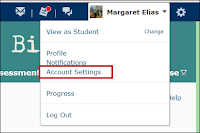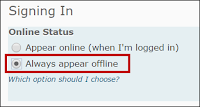According to Autumn Utley, who led the research team, these
upcoming students are not only more diverse and globally aware than previous
generations, they are also “independent, passionate, and take an active role in
their education.” In fact, when surveyed 72% of Gen Z students said they think
colleges should allow them to design their own educational program. They also
feel strongly that colleges should offer real-world experience beyond
coursework and exams.
As teachers then, we should be seeking ways for students to actively
participate in the community to help these students apply what they’re learning
in our course for their future employment. If you’re looking for some
inspiration on how to connect these students to the community, you might want
to watch Doug Klein’s 2016 StarTalk on how he involves his students in the
world outside of LCC.
We might think that these students are always connected
since they have grown up in the age of the Internet and smartphones. And, they
are indeed highly connected. On average, most of them use five different
electronic devices every day. Approximately 70% of them watch more than two
hours of YouTube content per day. (By the way, they rarely watch broadcast
television, nor do they really understand what a newspaper is. Instead,
they look to social media
to receive their breaking news.)
As a result, the UC report noted that Gen Z considers
“technology an extension of self—their source of entertainment, education, and
most importantly, their way of gathering, sharing and interpreting
information.” As educators, we should remember that they have become the
“curation generation.” In other words, since they like to collect and share
information, they are developing the ‘neuroplasticity’ to “filter and process enormous
amounts of information, efficiently and with purpose.” It is going to become
our job, as faculty, to help students navigate out of
the
echo chamber that social media can create and become good digital citizens.
However, Gen Z also has lots of surprises for us. According
to the University of Cincinnati research, 85% of them actually prefer
face-to-face time with their friends over electronic interaction.
The
members of Gen Z also read more books than those older 18 and older—and
they read mostly print books. So, while they will definitely want many aspects
of their learning experience to be “open and connected” like their experiences
with the Internet, they also highly value a human connection with their teacher
and they understand the importance of printed and hand-written text.
Finally, Gen Z tends to think of themselves as “hacktivists,”
someone who disrupts the system in order to facilitate positive change. In
other words, they want to solve personal and social problems. Therefore, including
a service learning component in a course is also a good way of reaching these
students.
If you have suggestions for blog posts or if you would like to discuss Gen Z, email Leslie Johnson (farrisl@star.lcc.edu), or stop by the Center for Teaching Excellence, TLC 324.


